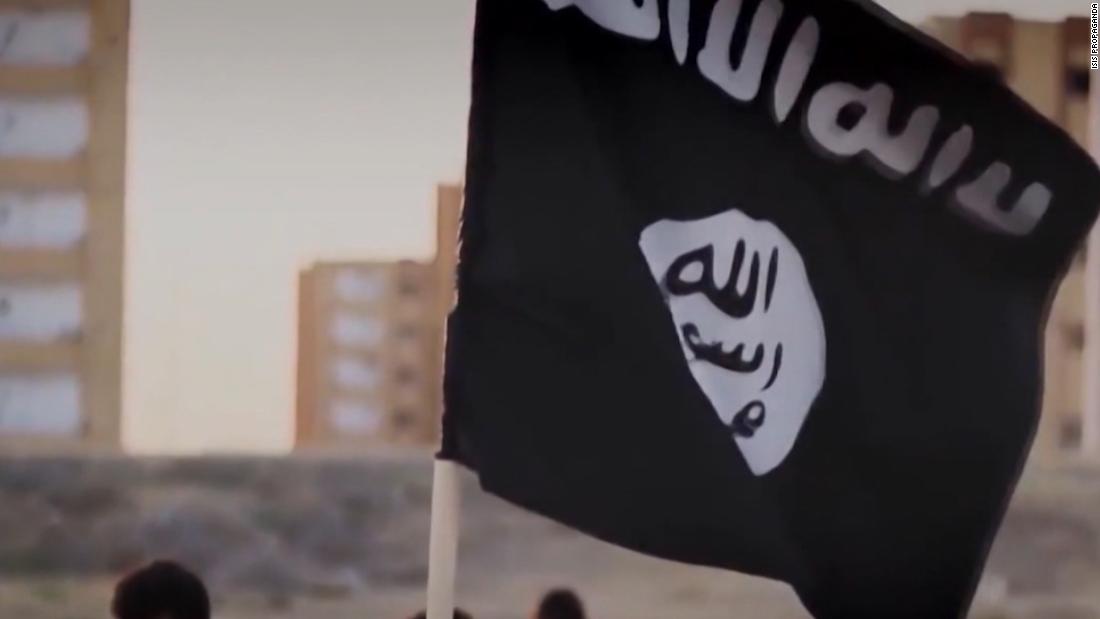
The comprehensive report, produced by the UN monitoring team that tracks the global jihadist terrorist threat, says the group is consolidating in Iraq and Syria and “shows confidence in its ability to increasingly operate blatantly in its former central area. ” “
It states that the number of ISIS attacks in Iraq and Syria “increased significantly in early 2020 compared to the same period in 2019.”
Referring to the situation in Iraq, the UN monitoring team stated that ISIS has “exploited the security breaches caused by the pandemic and the political turmoil in Iraq to relaunch a sustained rural insurgency, as well as sporadic operations in Baghdad and other major cities. “
In the past few weeks in particular, Iraq has seen a huge increase in Covid-19 cases, with a cumulative number of cases exceeding 100,000 on Thursday compared to less than 7,000 confirmed on June 1.
Syria has far fewer confirmed cases, but leaders of the U.S.-backed Syrian Democratic Forces say ISIS has exploited the fact that the pandemic has limited SDF mobility in the region.
The recently released UN report, which is based on information from member states, estimates that there are currently more than 10,000 ISIS fighters in Iraq and Syria.
One reason for ISIS resistance in those countries is money. According to the new UN report, member states assess that ISIS still has approximately $ 100 million in reserves. He claims that the group’s assets “are believed to take the form of cash, be buried or cached in the conflict zone, or held with financial facilitators in neighboring countries. Some of the funds have been invested in legitimate businesses in Iraq, the Syrian Arab Republic. ” and neighboring countries. “
Report challenges Trump’s narrative
The new United Nations findings challenge the narrative of President Donald Trump, who earlier this year claimed to have destroyed “100% of ISIS and its territorial caliphate.”
UN monitors also presented a more pessimistic assessment than the one recently presented by the Trump administration. In June, Ambassador James Jeffrey, special envoy of the world coalition to defeat ISIS, stated that although ISIS remained “a strong and significant threat” in Iraq and Syria, there was a small reduction in the total number of ISIS attacks and a decreasing in its complexity, “so we believe that the situation is not getting worse, it is improving”.
The new UN report also notes that the new ISIS leader Amir Muhammad Sa’id Abdal-Rahman al-Mawla “has not been visibly asserted in the communications, which may be a limiting factor in his influence and appeal, and maybe in the group “.
In June, the US government doubled the al-Mawla information reward to $ 10 million.
As for the big picture, the new UN report noted that while ISIS “maintains the ambition to control territory and populations … for the time being, [it] it represents an entrenched rural insurgency without the scope to threaten urban areas in a sustained way. ”
Covid-19 and the global terrorist threat
Outside of Syria, Iraq and other conflict zones, the UN report finds, the short-term terrorist threat has diminished as a result of the Covid-19 pandemic, noting that “restrictions on international travel significantly limit mobility terrorist, networking and finance activity “and that the targets have become more elusive due to the discouragement of public meetings
However, he cautions that ISIS “has had a captive audience during the blockade, and if it has been used successfully for planning and recruitment purposes, the reduction in restrictions in non-conflict areas may see an increase in attacks once that targets become available again. Another motivation is fear of irrelevance: COVID-19 largely overshadowed terrorism from the news. “
The report warns that if the pandemic leads to a severe global recession it could create conditions in which terrorist and extremist narratives earn more money.
The report also noted that there has been no indication that ISIS “is systematically trying to arm the virus.”
Al Qaeda concern
The report warns that the security situation in West Africa and the Sahel is a matter of particular concern, claiming that the ISIS and Al Qaeda franchises there “continued to enjoy operational success in the early 2020s”, raising further concern about stability in the region.
He also states that Al Qaeda remains active in Afghanistan for almost 19 years after September 11, and notes that its leadership continues to maintain a close relationship with the Haqqani network, a powerful subgroup within the Afghan Taliban.
Persistent close relations between Al Qaeda and the Taliban are widely seen as one of the main obstacles to future progress in the peace process in Afghanistan following the agreement signed between the United States and the Taliban earlier this year.
Although it was speculated that Al Qaeda leader Ayman al-Zawahiri, like Osama bin Laden, may have been hiding in Pakistan, the UN report states that according to member states, al-Zawahiri is currently in Afghanistan. The report finds that if “al-Zawahiri’s poor health … forced a succession of leadership, it would be a challenge for Al-Qaida in the context of a peace process” in Afghanistan.
The report also found that al-Qaeda has “taken root in local communities and conflicts” worldwide, with its recent “favored” affiliate in Syria, Hurras al-Din, “committed to preparing for external attacks despite its current focus. in attacking Syria. ” forces “and its Yemeni affiliate, Al Qaeda in the Arabian Peninsula, still” decided to mount external operations. “
The report states that “during his time in Pensacola and until the day of the attack, Alshamrani was in direct contact with Abdullah al-Maliki, an AQAP internet and media recruiting agent who was killed in Yemen on May 13. The attack Pensacola’s is believed to have been planned before Alshamrani’s arrival in the United States. ” At a press conference in May, Attorney General William Barr and FBI Director Christopher Wray revealed that al-Maliki had been the target of an anti-terror operation, but did not say whether he had been killed.
.